The Trans-Allegheny Lunatic Asylum was supposed to be a place of peace and restoration, but it soon devolved into madness and mayhem — and the spirits of tormented patients allegedly still haunt its halls today.
In 1858, construction began on a new mental health facility in Weston, West Virginia. The Trans-Allegheny Lunatic Asylum was meant to be a sharp departure from other institutions of the time.
Its creators wanted patients to be comfortable, not simply imprisoned the way they were at many other facilities.

Wikimedia CommonsThe exterior of the Trans-Allegheny Lunatic Asylum.
At first, these plans for “moral treatment” seemed to be working. Unfortunately, it wasn’t long before the asylum began experiencing overcrowding. By the 1950s, the building was holding ten times the number of residents it was designed for, and the quality of care started to decline.
Unsupervised patients began acting out, setting several fires and even murdering fellow residents. Local newspapers caught on to what was happening and investigated, releasing stories about how dirty and neglected both the asylum and its patients were.







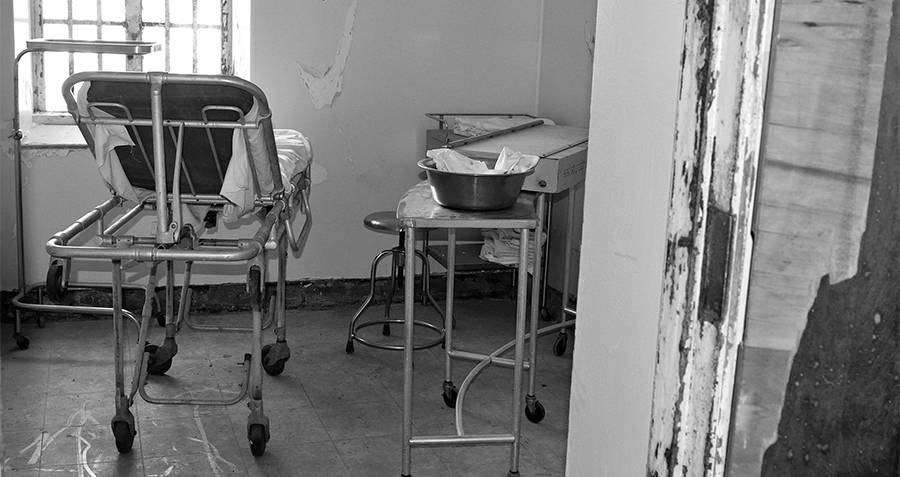
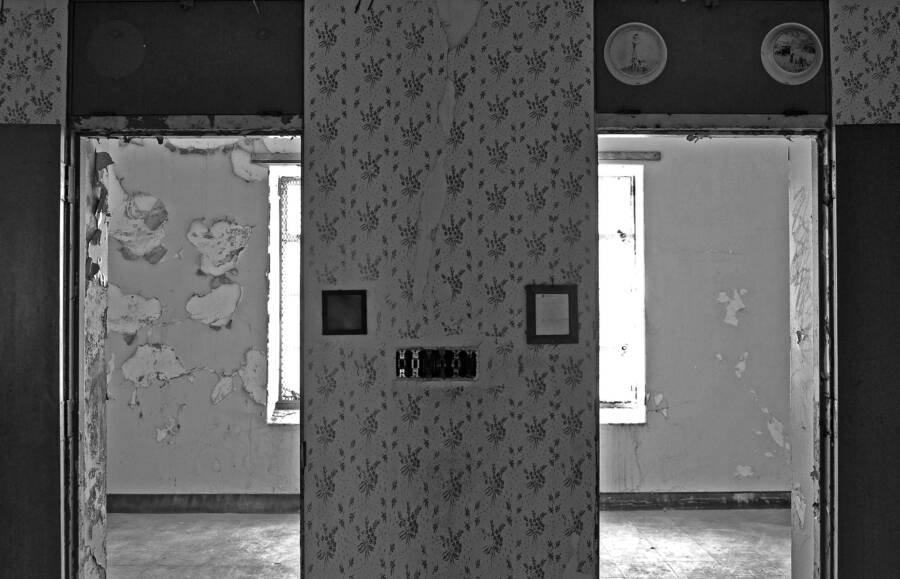
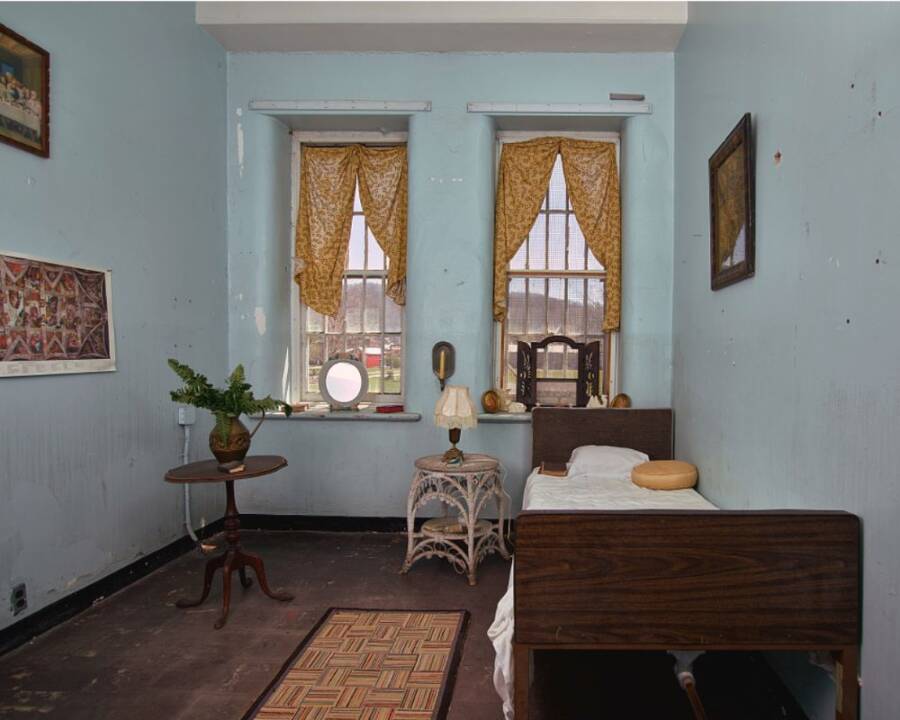
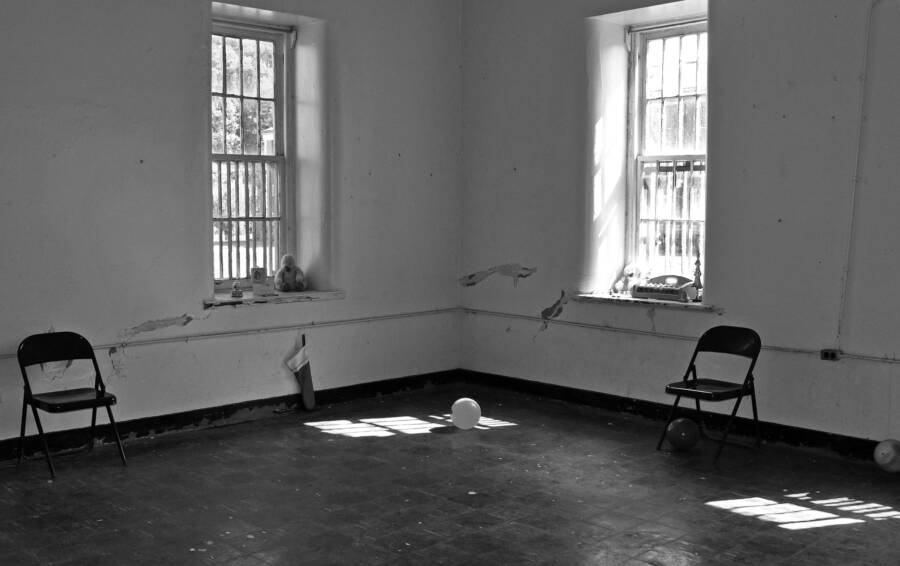
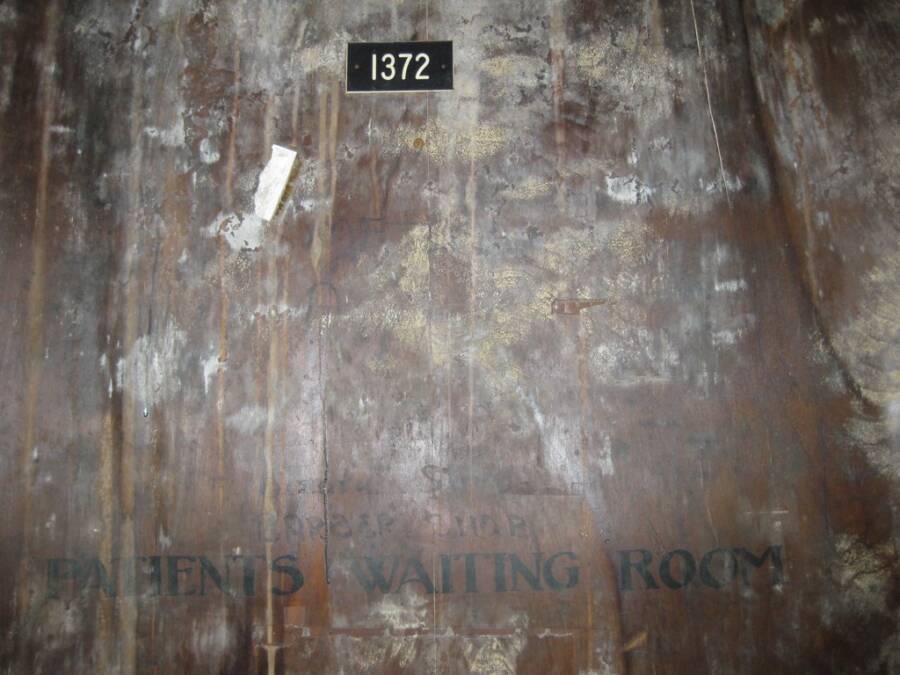



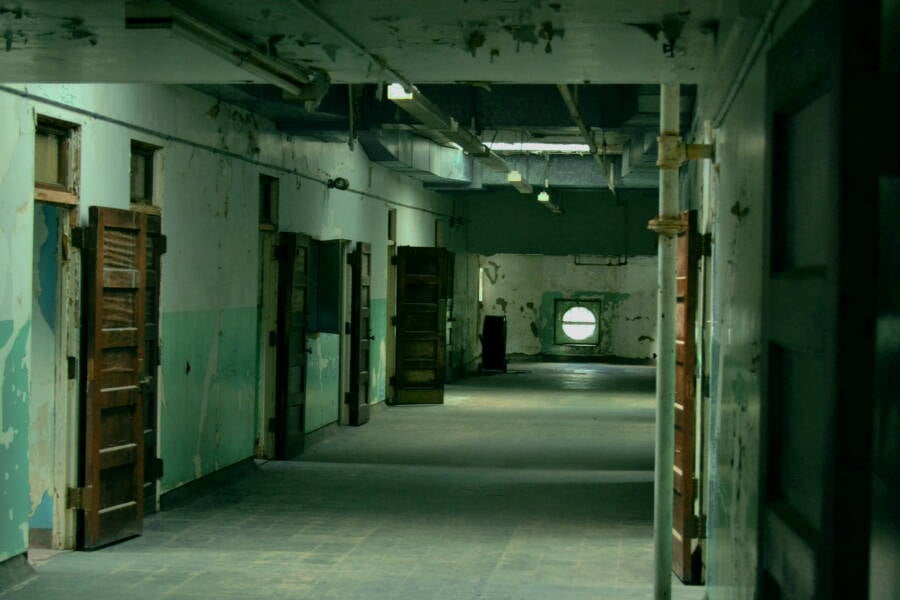
Like this gallery?
Share it:
And if you liked this post, be sure to check out these popular posts:
1 of 17
An exterior view of the Trans-Allegheny Lunatic Asylum.Carol Highsmith/Library of Congress
2 of 17
Patients and nurses gather in Ward B of the asylum. Date unknown.West Virginia State Board of Control
3 of 17
A line of beds in an overcrowded ward of the asylum. Date unknown.Trans-Allegheny Lunatic Asylum/Facebook
4 of 17
An overhead view of the asylum's main stairwell.Wikimedia Commons
5 of 17
A hallway leading to patients' rooms in the main building of the Trans-Allegheny Lunatic Asylum in Weston, West Virginia.EVA HAMBACH/AFP via Getty Images
6 of 17
A recreation of a sitting room in the living quarters for doctors at the asylum.EVA HAMBACH/AFP via Getty Images
7 of 17
An abandoned hallway.Carol Highsmith/Library of Congress
8 of 17
Medical equipment sits discarded in rooms at the asylum. EVA HAMBACH/AFP via Getty Images
9 of 17
A peek into two patient rooms.EVA HAMBACH/AFP via Getty Images
10 of 17
A recreation of a resident's room.Carol Highsmith/Library of Congress
11 of 17
This room allegedly belonged to a young girl named Lily, who is reported to still haunt it.EVA HAMBACH/AFP via Getty Images
12 of 17
The door into the waiting room for the asylum's barber shop.Wikimedia Commons
13 of 17
This lift was used to transport the bodies of dead patients to the basem*nt morgue.Wikimedia Commons
14 of 17
An original component of an X-ray machine sits on the floor inside a medical room at the asylum's Medical Center building.EVA HAMBACH/AFP via Getty Images
15 of 17
Metal sinks and tables on the lower floor of the asylum.Carol Highsmith/Library of Congress
16 of 17
The fourth floor of the Trans-Allegheny Lunatic Asylum.Matt Evans/Flickr
17 of 17
Like this gallery?
Share it:




Inside The Horrifying History Of The Trans-Allegheny Lunatic Asylum
View Gallery
The facility closed in 1994, and today urban explorers and ghost hunters alike can be found roaming its abandoned halls. Take a peek inside this allegedly haunted asylum and its tragic history.
The Optimistic Origins Of The Trans-Allegheny Lunatic Asylum
The Trans-Allegheny Asylum wasn't always such a nightmarish facility. In fact, when construction began in the 1850s, the concept behind the institution was revolutionary.
According to the asylum's official website, the building was the brainchild of Thomas Story Kirkbride, a physician and crusader for the mentally ill who founded what would eventually become the American Psychiatric Association.

Wikimedia CommonsAn 1898 portrait of Thomas Story Kirkbride, the physician behind the design of the Trans-Allegheny Lunatic Asylum.
Kirkbride built on the foundation established by famous reformer Dorothea Dix, who sought to disabuse people of their misconceptions about mental illness — namely, that it was a shadowy, irreversible condition best treated in darkness with force and physical restraint.
Shaky as the science behind some of Kirkbride's medical ideas was, it undeniably led to a more humane and effective plan of treatment for the residents of his asylums than any other practice of the era.
Kirkbride emphasized the importance of light and fresh air. He suggested that asylums be designed with open halls, high ceilings, plenty of windows, and ventilation that allowed for cross breezes.
He also emphasized freedom. Patients suffering from mental illness, he felt, should be allowed to roam as much as possible and find stimulation for their minds. They would behave better, not worse, if given more control over their own lives.
His ideas inspired the construction of 73 hospitals across the country built using the "Kirkbride Plan" in the second half of the 19th century — including the Trans-Allegheny Lunatic Asylum.
From Good Intentions To A Terrifying Reality
When it opened its doors in 1864, the Trans-Allegheny Lunatic Asylum, renamed the West Virginia Hospital for the Insane and later Weston State Hospital, was a model of Thomas Kirkbride's ideals.
It could house 250 patients, each with its own comfortable room. The building featured plenty of windows, giving residents access to natural light and fresh air.
The grounds covered more than 600 acres, according to Legends of America. They even included a working farm, a dairy herd, a water reservoir, and an ice plant. It was, as architect Richard Snowden Andrews had intended it to be, a self-sufficient, state-of-the-art facility, designed to make patients feel at home, well cared for, and restored.

EVA HAMBACH/AFP via Getty ImagesThe entryway, which has been restored to its original glory.
As time went on, however, the Trans-Allegheny Lunatic Asylum found its tranquil facilities overrun. By the 1930s, the hospital couldn't keep up. The patients inside were running wild, and the outnumbered orderlies struggled to regain control.
In October 1935, residents of the institution set fire to the fourth floor of the building, completely destroying it. Another time, two patients tried to hang another resident with bedsheets. When that didn't work, they crushed his head with a metal bed frame, killing him.
And in yet another incident, a nurse went missing — only to be found dead two months later at the bottom of an unused staircase.
At its peak in the 1950s, the hospital was crowded with 2,400 patients, more than ten times the number it was intended to house. And soon, local media started investigating the poor living conditions at the facility.
The Abandonment Of The Trans-Allegheny Lunatic Asylum
Throughout the 1900s, the Charleston Gazette published several reports exposing the terrible conditions within the Trans-Allegheny Lunatic Asylum. In 1949, according to the Weston Hospital Revitalization Committee, the newspaper printed that the asylum looked "like a hogpen" and "smelled even worse."
And in 1985, the paper reported that the hospital was "dirty and unkempt," and that patients were naked and "confined to dirty wards with bathrooms smeared with feces."
The exposé published by the Gazette spurred a movement to close down the hospital, but it wasn't until 1994, after decades of squalor, that the Trans-Allegheny Lunatic Asylum shut its doors forever.

EVA HAMBACH/AFP via Getty ImagesAn old body cooler sits open and abandoned in the basem*nt.
By the time the asylum was closed, only one part of it had been expanded enough to sufficiently accommodate demand: the cemetery.
Now, the once-ornate building, intended for healing but destined for destruction, sits abandoned, as if the patients simply vanished into thin air. Rooms are still filled with medical equipment and decrepit furniture, and wheelchairs litter the hallways.
Some believe the hospital is haunted. Visitors report seeing ghostly figures walking through the hallways at night and balls of light floating through the air.
The most famous ghost is perhaps that of a young girl named Lily, a patient who died of pneumonia at the age of nine. Her room on the fourth floor is still filled with toys, as if she's waiting for someone to play with her. The dolls and balls reportedly move on their own, while a music box turns on at random.
While skeptics deny the paranormal rumors surrounding the facility, there is one thing all can agree on: The crumbling building serves as a reminder of a shameful past and an urgent call to do better in the future.
After reading about the Trans-Allegheny Lunatic Asylum, check out these haunting photos of asylum patients from years gone by. Then, read about the Bethlem Royal Hospital, better known as Bedlam.